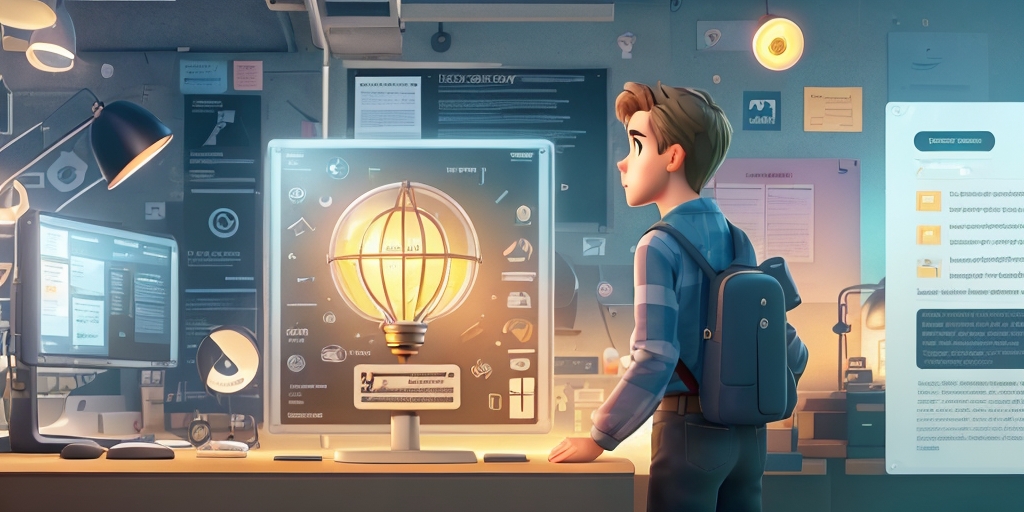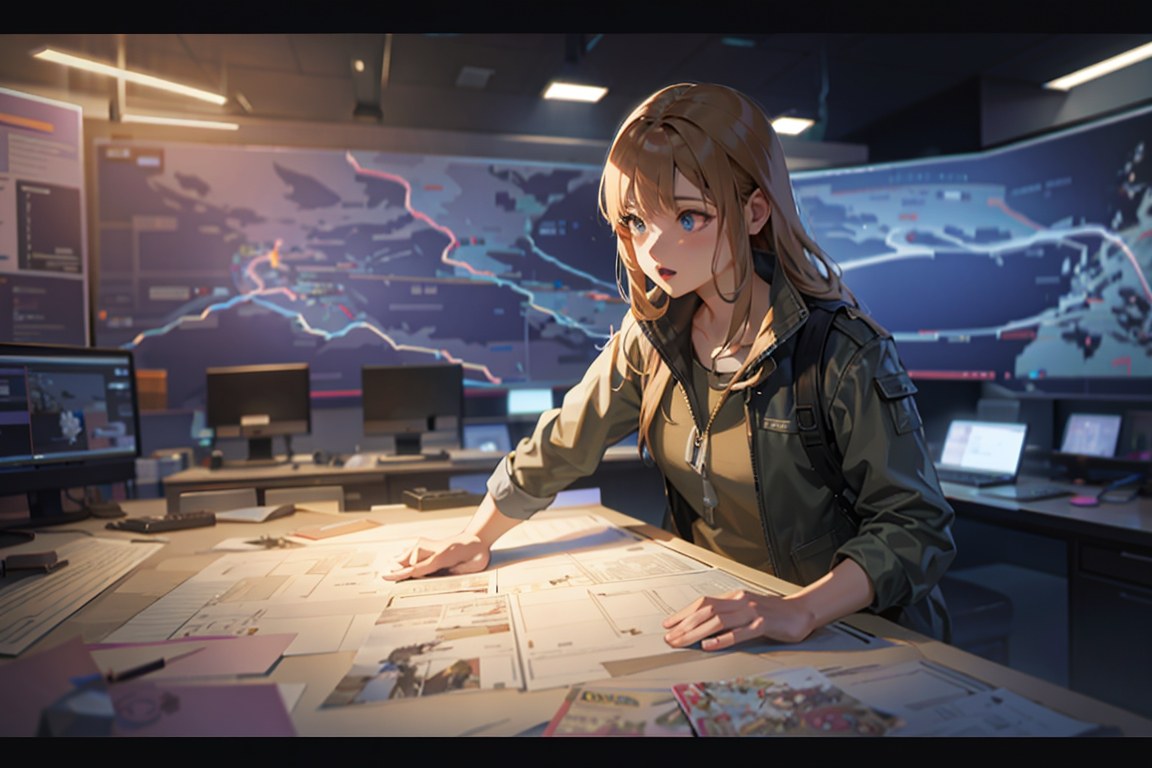Why Icons Matter in Crafting User-Friendly Websites
I am a creative and analytical person who enjoys problem-solving and finding creative solutions. I am driven by curiosity and a passion for learning, and take initiative to explore and understand new concepts. I am a great communicator and collaborate well with others, and am always looking for opportunities to improve myself and my team.
Why Icons Matter in Crafting User-Friendly Websites
The Challenge of Navigating Websites

With the vast amount of information available on the internet, it's easy for users to feel overwhelmed. Websites are often packed with text, links, and features, making it difficult for users to find what they're looking for. This can lead to frustration and, in the worst-case scenario, users leaving the website altogether.
The Icon Solution
Enter icons. These small, graphic symbols are more than just decorative elements. They're a powerful tool that can significantly enhance the user experience on a website. But how exactly do they do this?
- Visual Appeal: Icons add a visual element to a website, breaking up large blocks of text and making the site more aesthetically pleasing.
- Efficiency: Icons provide a quick and easy way for users to navigate a website. Instead of reading through text, users can simply click on an icon to access a feature or page.
- Universal Understanding: Icons are language-independent, meaning they can be understood by users regardless of their native language. This makes them a powerful tool for international websites.
Take, for example, the 'shopping cart' icon commonly used on e-commerce websites. Regardless of the user's language, this icon is universally understood to represent the shopping cart feature. It's quick, efficient, and eliminates the need for translation.
But that's not all. A study by the Nielsen Norman Group found that users pay close attention to icons on a website. They found that icons are one of the first things users look at when they visit a site, making them a crucial element in guiding users and enhancing their experience.
So, we've established that icons are essential in website design. But how can you ensure you're using them effectively? And what types of icons should you be using? Stay tuned as we delve deeper into the world of icons in the next section.
Understanding the Purpose of Icons
Ever clicked on a hamburger menu on a website? Or perhaps you've used a magnifying glass icon to search for something specific? These are examples of icons, and they're everywhere on the internet. But why are they so important?
Icons are not just decorative elements on a website. They serve a crucial purpose: to help users navigate a website quickly and easily. They're like signposts in a busy city, guiding users to where they need to go.
The Role of Icons in Design
Icons are a fundamental part of a good design system. They're like the visual language of a website, communicating information quickly and efficiently. And the best part? They're language-independent. This means they can be understood by anyone, regardless of their language or culture. This makes them a powerful tool in web design, especially for international websites.
Consider the 'shopping cart' icon, for example. No matter where you are in the world, if you see this icon on a website, you'll know that it's where you go to view your selected items. It's a universal symbol that doesn't need any translation.
The Benefits of Using Icons
Icons offer numerous benefits in web design. Here are a few:
- Enhanced user experience: Icons make a website more user-friendly. They guide users through a website, making it easier for them to find what they're looking for.
- Fast recognition: Studies have shown that humans process images faster than text. This means that users can understand the function of an icon faster than reading a text link.
- Language-independent: As mentioned earlier, icons are universally understood. This makes them a versatile tool for international websites.
As Steve Jobs once said, "Design is not just what it looks like and feels like. Design is how it works." Icons are a perfect example of this. They're not just there to make a website look pretty; they're there to make it work better.
But how do you choose the right icons for your website? And what types of icons can you use? Stay tuned as we delve into these topics in the next section.
The Different Types of Icons on a Website
![]()
Just as there are different types of words in a language, there are various types of icons used on a website. Each icon serves a unique purpose, and understanding these can help you make the most of them in your web design. Let's explore some of the most common types of icons you'll encounter.
The Favicon
Ever noticed that tiny image on the tab of your browser when you open a website? That's a favicon, also known as a shortcut icon or website icon. It's a small, yet powerful tool in branding and user experience. A favicon helps users identify your website among their open tabs quickly. It's like a mini logo, reinforcing your brand identity even in the smallest of spaces.
For instance, the Facebook favicon is a small white 'f' on a blue background. It's instantly recognizable, isn't it? That's the power of a well-designed favicon.
Navigation Icons
These are the workhorses of any website. Navigation icons guide users through your site, from the home page to contact information. Common examples include the hamburger icon for menus, the house icon for home, and the envelope for contact or email.
Think about the shopping cart icon on e-commerce websites. It's universally understood, isn't it? That's because it's simple, clear, and directly related to its function - leading you to your shopping cart.
Interactive Icons
Interactive icons are those that change when you interact with them. They might change color when you hover over them, or transform into a different icon when clicked. These icons add a dynamic element to your website, enhancing user engagement.
Consider the 'like' icon on Instagram. When you click on it, it changes from an outline to a solid heart, indicating that you've liked the post. It's a small detail, but it adds to the overall user experience.
Social Media Icons
These icons link to your social media profiles, allowing users to connect with you on different platforms. They're usually found in the header or footer of a website. The Facebook 'f', Twitter bird, and Instagram camera are all examples of social media icons.
Remember, "Design is not just what it looks like and feels like. Design is how it works." - Steve Jobs. Icons are a testament to this quote, combining aesthetics and functionality to enhance user experience.
Now that we've explored the different types of icons, you might be wondering how to choose the right ones for your website. Well, stay tuned, because that's exactly what we're going to delve into next.
How to Choose the Right Icons for Your Website
![]()
Choosing the right icons for your website is not just about aesthetics. It's about making sure your users can navigate your site with ease and understand what each page or section is about. But how do you choose the right icons? Let's dive in.
Considerations in Icon Design
When it comes to icon design, there are a few key factors to consider. First and foremost, you need to think about your audience. What kind of icons will they understand? What kind of icons will they find appealing?
For instance, if your website caters to a global audience, you need to be aware of cultural differences. An icon that is easily understood in one culture might be confusing in another. For example, a mailbox icon might be understood as a symbol for email in western cultures, but not in others.
Another important consideration is the overall aesthetic of your website. The icons you choose should match the look and feel of your site. If your website has a minimalist design, for example, your icons should also be minimalist. They should not be overly detailed or colorful.
Remember the words of Paul Rand, a renowned graphic designer, "Design is so simple, that's why it is so complicated." The simplicity of your icons can make or break the user experience on your website.
Icon Resources
Now that you know what to consider when choosing icons, where do you find them? There are several resources available for finding and creating icons. Here are a few:
- Flaticon: This is a database of free vector icons. You can find icons in various styles, sizes, and formats.
- Noun Project: This is a platform where designers from around the world share their icon designs. You can download icons for free or purchase a license for commercial use.
- Icons8: This is a resource for free icons and other design elements. You can download icons in various formats and sizes.
These resources can help you find the perfect icons for your website. But remember, the most important thing is that your icons are clear, understandable, and match the overall design of your site.
Now that you know how to choose the right icons for your website, you might be wondering how these icons can impact your website's performance. Can they slow down your site? Can they improve user engagement? Stay tuned to find out.
The Impact of Icons on Website Performance
Ever wondered how icons can affect your website's performance? It's not just about aesthetics or user navigation. Icons can significantly impact the speed and user engagement of your website. Let's explore how.
Icons and Website Speed
While icons are a great tool for enhancing user experience, they can also be a double-edged sword. If not optimized properly, they can slow down your website. This is because every icon on your website requires an HTTP request to load. The more HTTP requests, the slower your website loads.
For instance, a study by Google found that a delay of just half a second in page load time can cause a 20% drop in web traffic. So, it's crucial to optimize your icons for speed. One way to do this is by using icon fonts or SVGs instead of individual image files. These formats are smaller in size and require fewer HTTP requests, thus improving your website's speed.
Icons and User Engagement
Icons can also play a significant role in user engagement. A well-placed and well-designed icon can draw the user's attention, guide them through your website, and encourage them to take action. For example, a shopping cart icon on an e-commerce website can prompt users to make a purchase.
Moreover, a study by Microsoft found that users can recognize icons faster than text. This means that using icons can help users navigate your website more quickly, leading to higher user engagement.
However, it's important to use icons wisely. Too many icons can overwhelm users and make your website look cluttered. Also, using unfamiliar or confusing icons can frustrate users and drive them away. So, it's all about finding the right balance.
So, how can you ensure that your icons are enhancing, not hindering, your website's performance? And what does the future hold for icons in web design? Stay tuned for the next part of this article where we'll delve into these questions and more.
The Future of Icons in Web Design
![]()
As we look ahead, it's clear that technology continues to evolve at a rapid pace. This evolution is not limited to hardware and software alone, but also extends to the realm of web design, particularly in the use of icons.
The Evolution of Icons
Icons have come a long way since their inception. They started as simple graphic symbols, often monochromatic and basic in design. However, as technology advanced, so did the complexity and versatility of icons. Today, they are not just simple symbols but can convey a wealth of information through their design.
For instance, the evolution of the 'save' icon is a perfect example. It started as a floppy disk image, a technology that is now obsolete. However, the icon has evolved to represent the concept of saving, regardless of the medium. This evolution shows how icons can adapt to changing technologies and user behaviors.
The Future of Icon Design
With the continuous advancements in technology, we can expect to see more innovative and interactive icon designs in the future. The rise of augmented reality (AR) and virtual reality (VR) technologies, for example, opens up new possibilities for icon design.
Imagine an icon that not only represents a function but also interacts with the user in a three-dimensional space. Or an icon that changes its appearance based on the user's actions. These are just a few examples of how icons could evolve in the future.
Moreover, with the increasing importance of personalization in user experience, we might see icons that adapt to the individual user's preferences and behaviors. This could mean icons that change color, shape, or even function based on the user's past interactions.
Wrapping Up
In conclusion, icons are more than just decorative elements on a website. They play a crucial role in enhancing user experience, improving website navigation, and conveying information in a visually appealing way. As technology continues to evolve, we can expect icons to become even more integral to web design, offering innovative and interactive ways to engage users. Therefore, the importance of icons in web design should never be overlooked.



.jpg)
.jpg)

.jpg)
.jpg_nowm_1260.jpg)